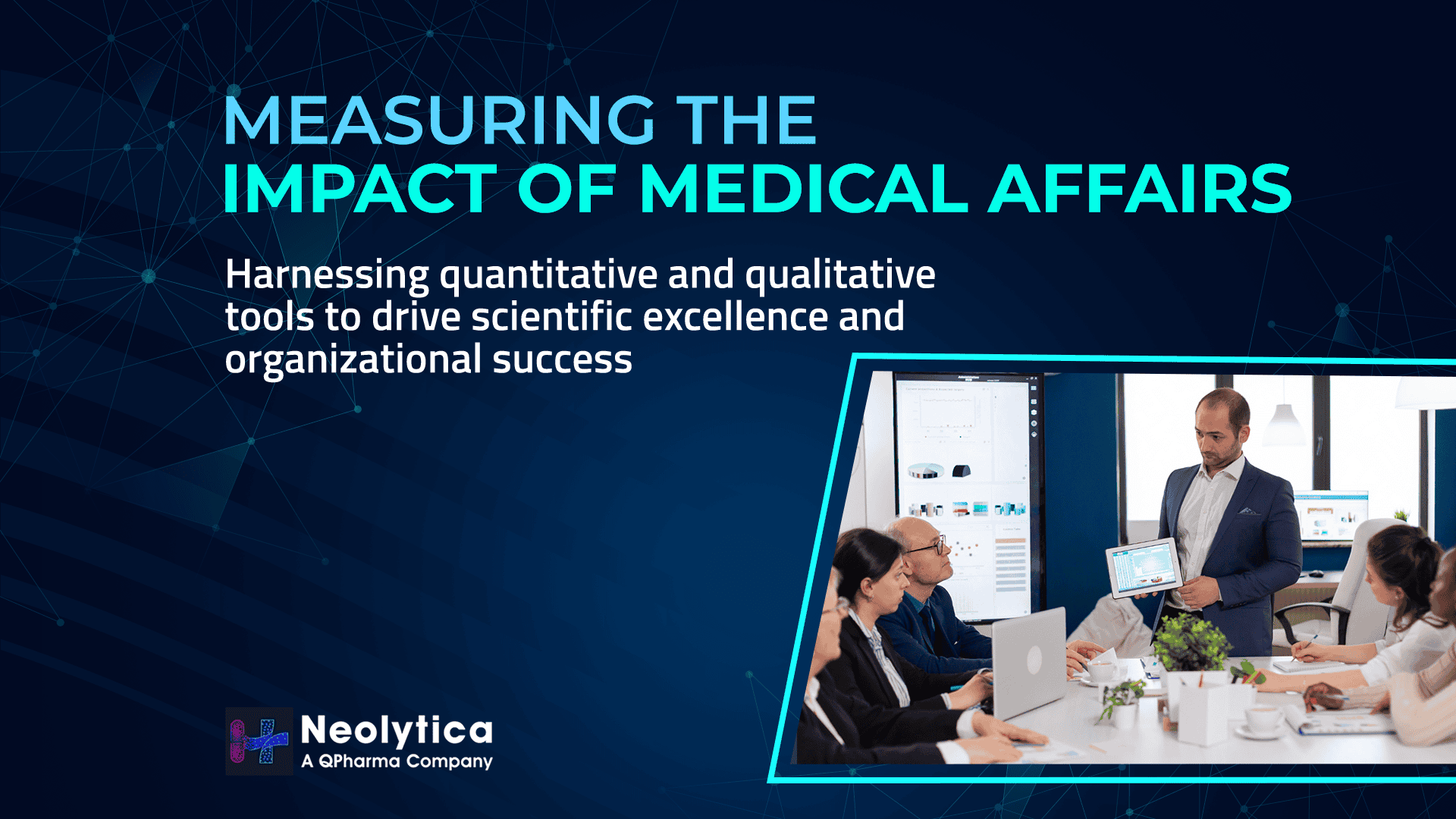Introduction
In the dynamic and ever-evolving pharmaceutical landscape, the role of Medical Affairs is becoming increasingly pivotal. Medical Affairs serves as the essential bridge between the scientific community and the commercial sector, ensuring that cutting-edge research is effectively communicated to Key Opinion Leaders (KOLs), healthcare professionals (HCPs), stakeholders, and patients. As the influence of Medical Affairs grows, so does the need to accurately measure its impact on the healthcare ecosystem.
The Expanding Role of Medical Affairs
Historically, Medical Affairs was viewed as a support function, primarily offering scientific expertise to commercial teams and addressing medical inquiries from HCPs. Today, the role has broadened to include strategic planning, real-world evidence generation, and deep stakeholder engagement. As Medical Affairs assumes a more strategic and integral role, a comprehensive approach is required to measure its true impact on healthcare outcomes.
Key Metrics for Measuring the Impact of Medical Affairs
- Scientific Engagement Metrics
- Scientific Publications: The generation of peer-reviewed literature is a cornerstone of Medical Affairs. Tracking the number of publications, their impact factors, and citations provides a quantitative measure of the scientific influence exerted by Medical Affairs.
- Conference Participation: The number of abstracts presented, types of presentations (oral, poster), and feedback from participants at key conferences are valuable indicators of the reach and influence of Medical Affairs activities.
- Stakeholder Engagement Metrics
- KOL Engagement: Measuring the frequency, quality, and depth of KOL engagements is crucial. Metrics can include the number of field interactions, topics, number of advisory boards conducted, actionable insights generated, and the strategic influence these insights bring to broader company goals.
- HCP Education Programs: The effectiveness of educational initiatives can be measured through attendance rates, post-event feedback, and follow-up surveys to gauge knowledge retention and application.
- Internal Impact Metrics
- Support to Commercial Teams: The effectiveness of Medical Affairs in supporting commercial strategies can be evaluated by the training provided, feedback from sales teams, and the integration of scientific insights into marketing and commercialization efforts.
- Cross-Functional Collaboration: Assessing the collaboration between Medical Affairs and other internal departments (regulatory, clinical development, market access) provides insight into the broader organizational impact and alignment.
- Real-World Evidence Metrics
- Real-World Data Studies: The number and quality of real-world data (RWD) studies, and their influence on clinical practice or policy, serve as critical measures of Medical Affairs’ contribution to real-world evidence (RWE) generation.
Tools and Technologies for Measuring Medical Impact
The advancement of digital technologies has made it easier to measure the impact of Medical Affairs on healthcare. Some key tools include:
- Customer Relationship Management (CRM) Systems: CRMs track HCP, KOL, and stakeholder interactions, offering valuable engagement insights.
- Publication Management Software: These platforms streamline the lifecycle of scientific publications and provide metrics on publication reach and impact.
- Analytics Platforms: By aggregating data from multiple sources, these platforms deliver powerful insights into the effectiveness of Medical Affairs activities and identify areas for improvement.
- Survey and Feedback Tools: Digital surveys and feedback systems help capture qualitative insights from HCPs, KOLs, and internal stakeholders.
Challenges in Measuring Medical Impact
Despite technological advances, challenges remain in measuring the full impact of Medical Affairs:
- Data Fragmentation: Information is often dispersed across multiple departments and systems, complicating the task of assembling a comprehensive picture of Medical Affairs’ impact.
- Quantitative vs. Qualitative Data: While quantitative metrics are easier to track, qualitative insights from KOLs and stakeholders are equally vital. Balancing both types of data remains a challenge.
- Complexity in Measuring Commercial Impact: The intricate and multi-layered nature of the pharmaceutical industry makes it difficult to isolate the direct effects of Medical Affairs on commercial success or patient outcomes.
Best Practices for Effective Measurement
To overcome these challenges, organizations should adopt several best practices:
- Sentiment Analysis: Leverage sentiment analysis to effectively measure and quantify the impact of your field teams and tactical initiatives. Sentiment can be monitored at various levels, from individual KOLs to broader networks, and across geographic regions. This enables you to gain actionable insights into the reach and influence of your strategies.
- Integrated Data Systems: Creating seamless data integration across departments ensures that all relevant metrics are captured and measured accurately.
- Balanced Scorecard Approach: Combining quantitative and qualitative metrics provides a holistic view of Medical Affairs’ impact.
- Continuous Review and Adaptation: Regularly reviewing and updating measurement systems to incorporate new trends and tools ensures a robust and evolving approach to impact assessment.
- Stakeholder Involvement: Engaging HCPs, KOLs, and internal stakeholders in defining success metrics helps ensure alignment with both organizational objectives and external expectations.
Conclusion
By leveraging a balanced combination of quantitative and qualitative tools, organizations can effectively measure the impact of Medical Affairs. This crucial function is not only a driver of scientific excellence but also a key contributor to overall organizational success, ensuring its growing relevance in an increasingly complex healthcare landscape.


